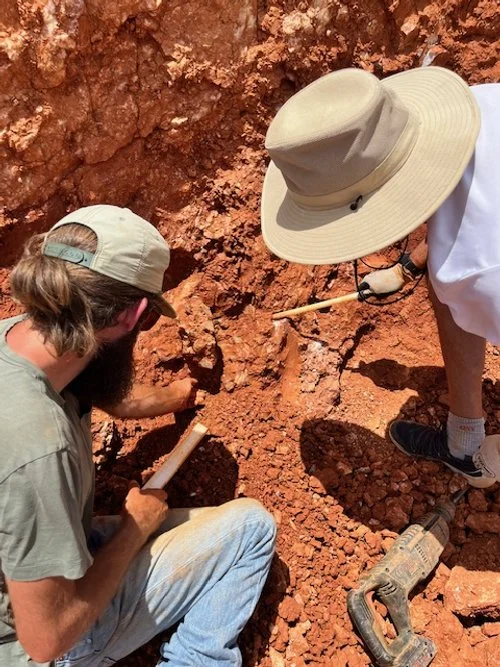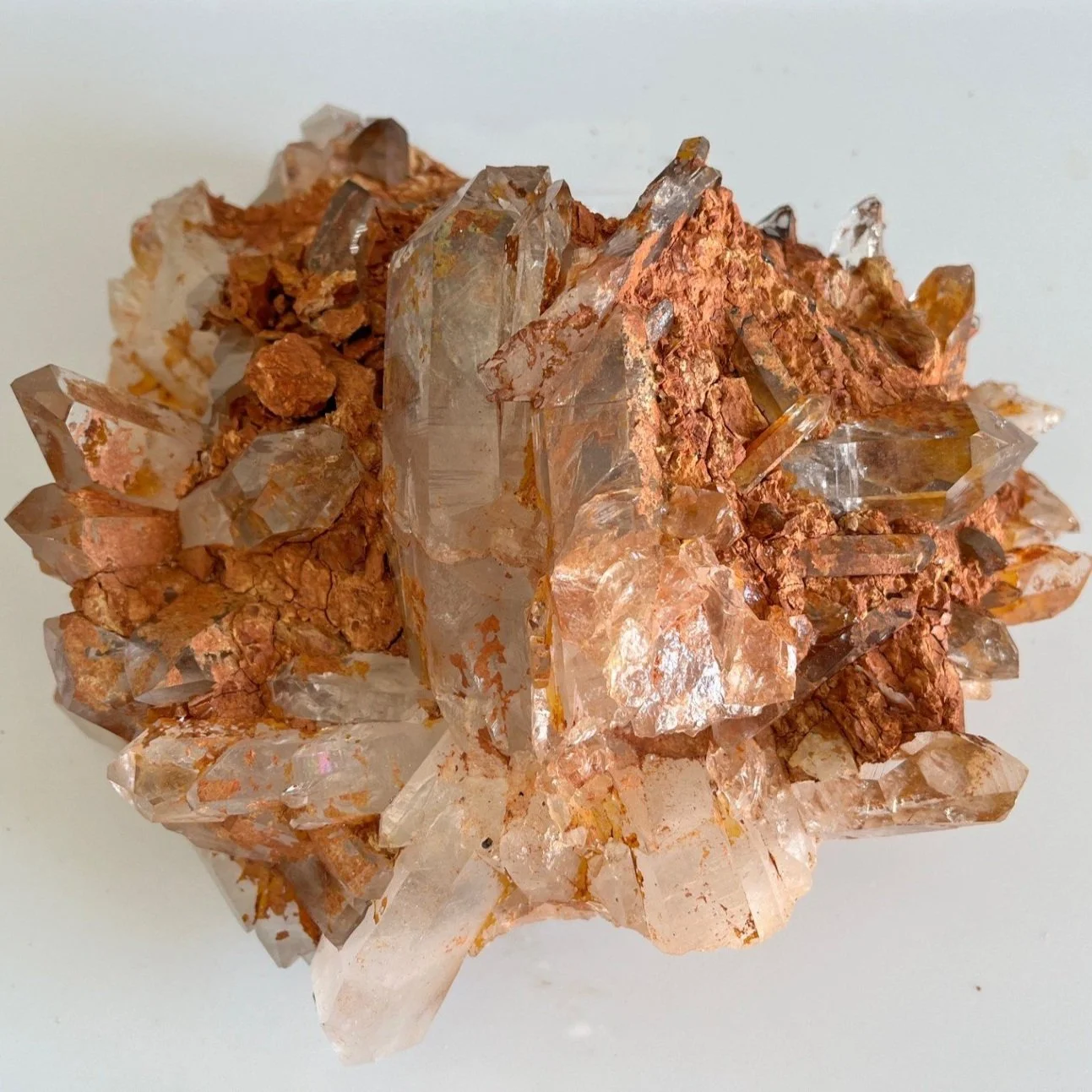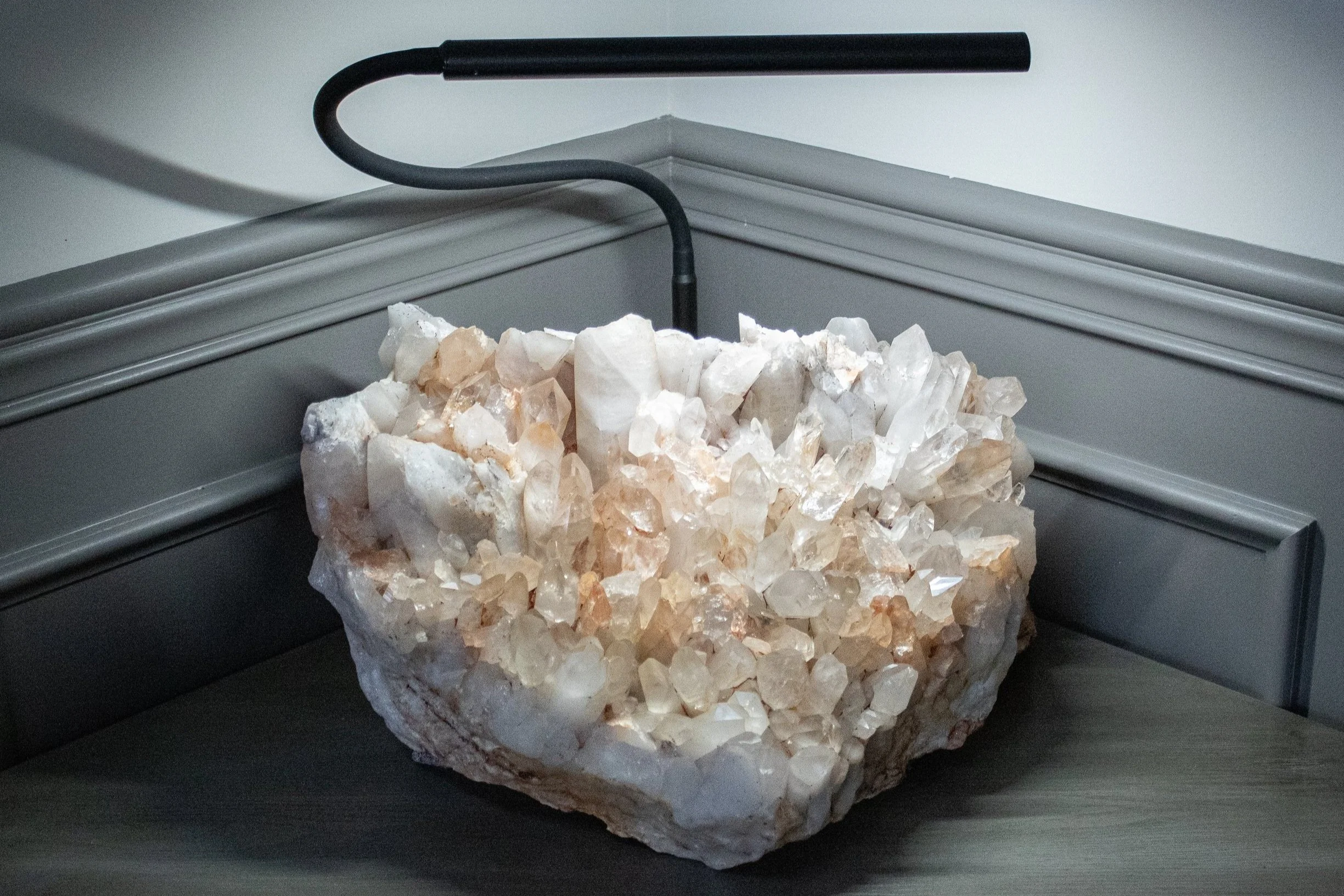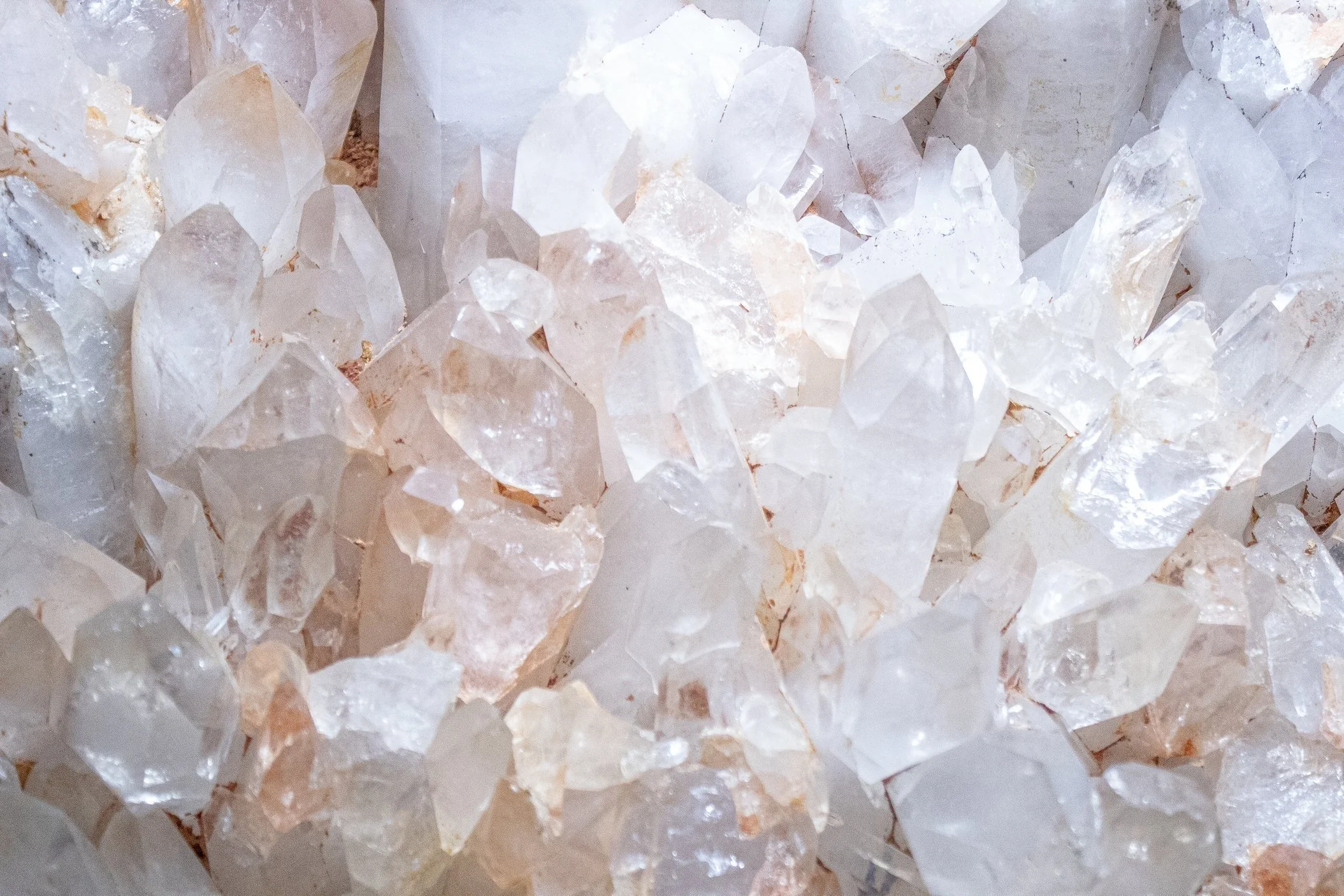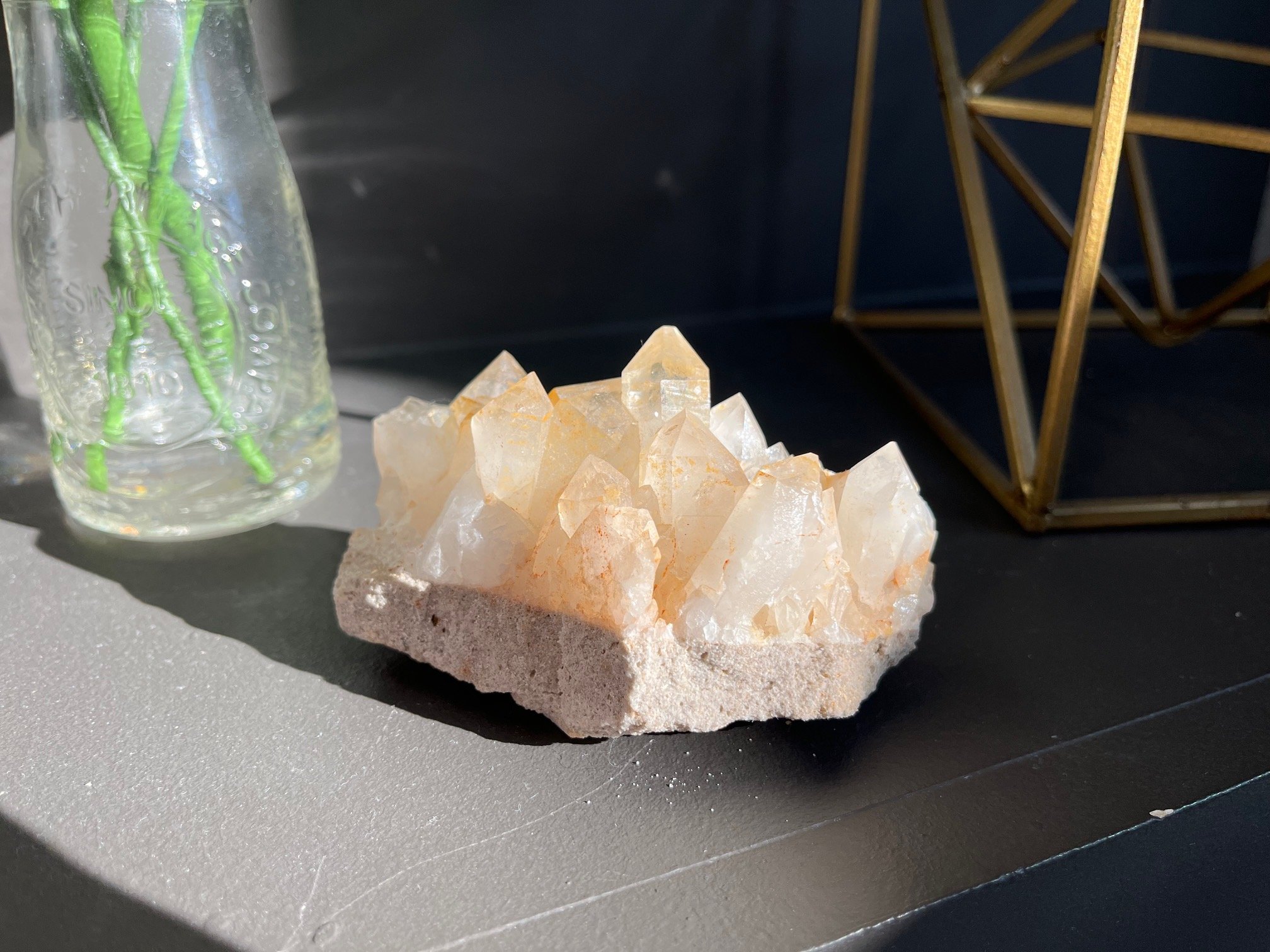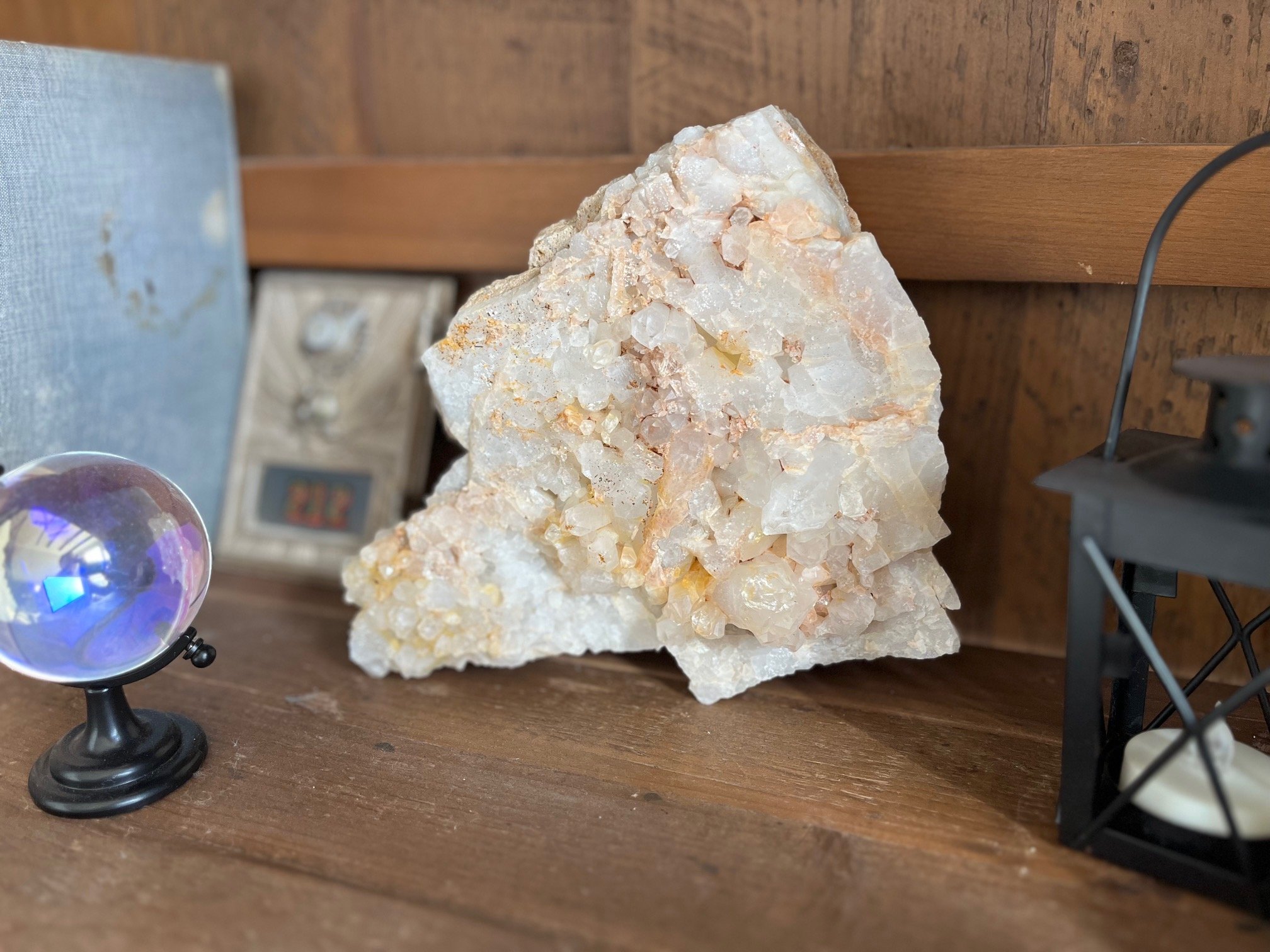From the mine to your personal collection, here is the journey of our distinct Quartz Crystals.
QUARTZ IS A PRIMADORIAL.
Specimens range in age from 100 million to 150 million years old. The formation process is tedious by geologic standards, and conditions must be perfect for crystal formation – especially for large or multi-clustered examples.
01. MINING
Rock quartz crystals are found in areas that are rich in natural silica deposits, and influenced by the perfect combination of oxygen, volcanic and tectonic compression and nearby supporting ancillary mineral and loam (soil) composition. The factors mentioned must exist in just the right proportions to form the unique crystals and allow them to remain stable through millions of years of constant natural forces acting upon them by their surrounding environment.
As such, when extracted from the very Earth that has served as “home” for countless millennia – the crystals are embedded with heavy clay and other mineral deposits that typically conceal much of the natural beauty of the crystals.
The United States has several surface-accessible mining sites, where the naturally formed quartz “vein” has been elevated over millions of years to a location near the Earth's surface. Finding prize rock quartz specimens take considerable time, effort, and diligence – along with a bit of good luck.
Once found and carefully excavated by hand to preserve the integrity of the crystal structures, a long and arduous process ensues to clean and prepare specimens for maximum beauty and proper display.
02. CLEANING
Removing these “contaminants” is difficult to accomplish without altering the natural qualities of the crystal and disturbing the formation track that dictates length, girth, coloring and structural composition (cluster, single crystal, etc.). The process involves soaking the crystals in solutions designed to loosen the surrounding soil and minerals, without harming the beauty and intrinsic qualities of the formations.
After soaking and drying, the crystals begin a regimen of hand “tacking” whereby remaining contaminants are carefully and skillfully released from the surface of the crystals by using hardwood toothpicks, soft shaped single strand wire, camel hair brushes and high-pressure textile sprayers that focus a tiny spray pattern of water on specific areas of the specimen without damaging nearby fragile structures.
Depending on size, most multi-point clusters take 10 to 20 minutes per square inch to clean and prep for display. Therefore, a single cluster measuring 6” X 6” would require approximately 10 to 12 hours to clean and prepare.
Hours upon hours of skilled craftmanship are involved to transform a single small cluster from soil and mineral encrusted discovery, to museum quality display with a focus toward incredible visual prominence.
03. THE FINAL PRODUCT
The very best examples of natural Rock Quartz will exhibit unique and varying coloration patterns in hues that range from ruddy rust to various subdued shades of light orange or yellows, along with the rarer clear/transparent or faintly “milky” patterned spires. Occasionally, dark inclusions that may resemble fine lace or fog are found in clear examples – coining the term “shadow” quartz.
After proper cleaning accurate representations of rock quartz generally contain faint coloration acquired during the formation process. Totally clear examples are special, and some sellers often chemically enhanced crystals in an attempt to achieve unnatural clarity.


